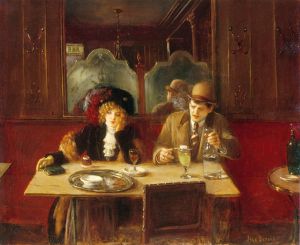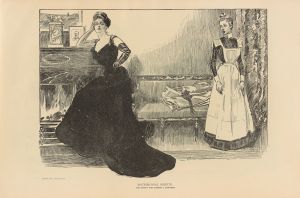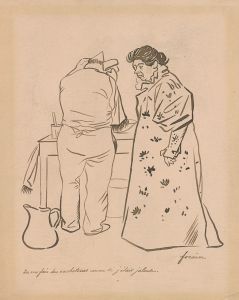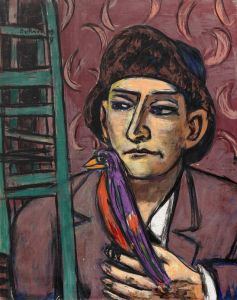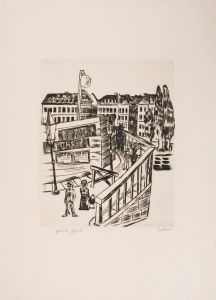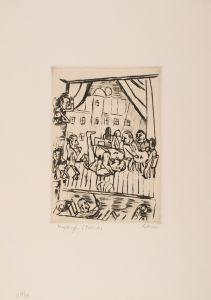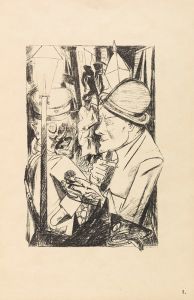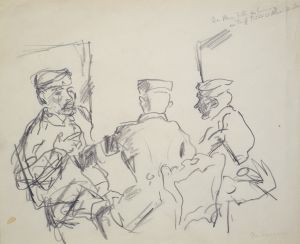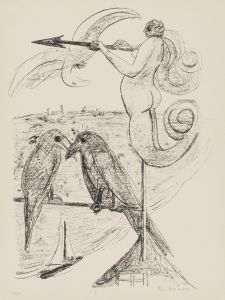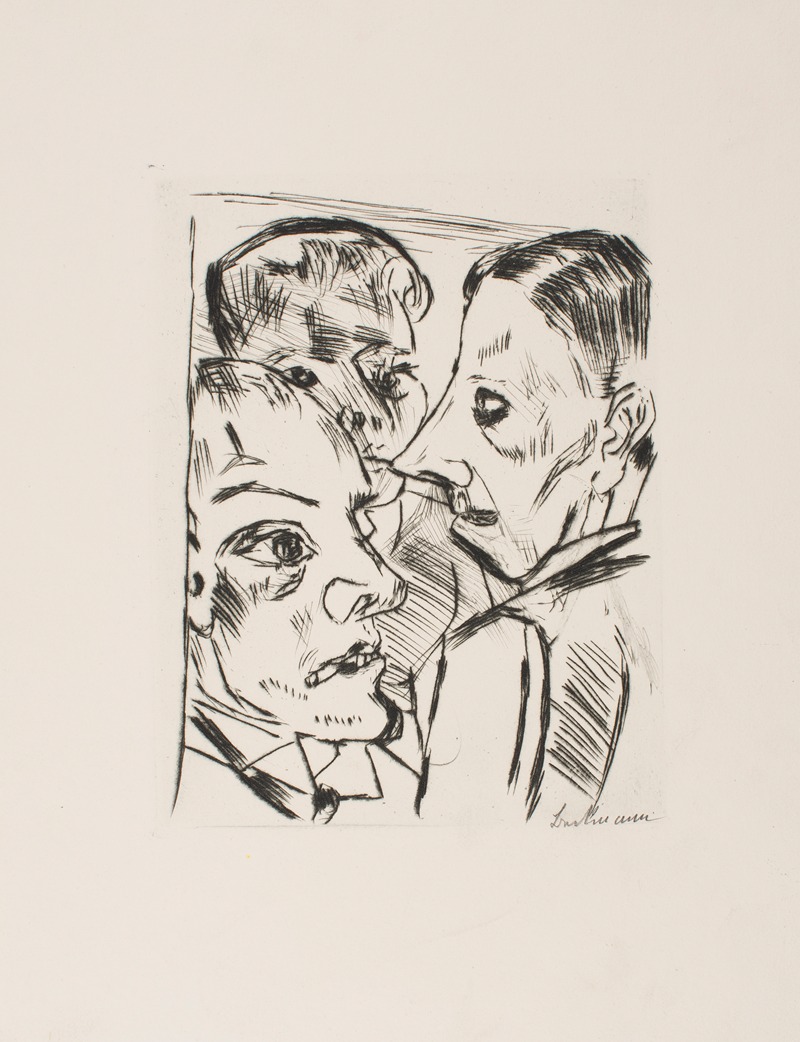
Mr. Müller, I and the Barmaid
A hand-painted replica of Max Beckmann’s masterpiece Mr. Müller, I and the Barmaid, meticulously crafted by professional artists to capture the true essence of the original. Each piece is created with museum-quality canvas and rare mineral pigments, carefully painted by experienced artists with delicate brushstrokes and rich, layered colors to perfectly recreate the texture of the original artwork. Unlike machine-printed reproductions, this hand-painted version brings the painting to life, infused with the artist’s emotions and skill in every stroke. Whether for personal collection or home decoration, it instantly elevates the artistic atmosphere of any space.
Max Beckmann's painting "Mr. Müller, I and the Barmaid" is a significant work by the German painter, known for his contributions to the New Objectivity movement in the early 20th century. Beckmann, born in 1884 in Leipzig, Germany, was a prominent figure in modern art, and his works often reflect the tumultuous socio-political landscape of his time, characterized by the aftermath of World War I and the rise of the Weimar Republic.
"Mr. Müller, I and the Barmaid" was created during a period when Beckmann was exploring themes of identity, society, and the human condition. His style is marked by bold lines, dramatic compositions, and a vivid use of color, which are evident in this painting. Beckmann often included autobiographical elements in his work, and this painting is no exception, as it features a self-portrait alongside other figures.
The painting depicts three figures in a bar setting: Mr. Müller, the artist himself, and a barmaid. Beckmann's self-portrait is a common motif in his work, allowing him to explore his own identity and role as an artist. The inclusion of Mr. Müller, a figure whose identity remains largely unknown, adds an element of mystery and intrigue to the painting. The barmaid, another recurring character in Beckmann's oeuvre, represents the everyday people who populate his urban scenes.
Beckmann's work is often characterized by its psychological depth and complexity. In "Mr. Müller, I and the Barmaid," the interactions between the figures suggest a narrative that invites viewers to ponder the relationships and dynamics at play. The setting of a bar, a social space where different classes and personalities intersect, provides a backdrop for exploring themes of alienation and connection.
The painting's composition is carefully constructed, with the figures arranged in a way that draws the viewer's eye across the canvas. Beckmann's use of color and form creates a sense of tension and movement, reflecting the inner turmoil and existential questions that permeate his work. The barmaid's gaze, the posture of Mr. Müller, and Beckmann's own introspective expression contribute to the painting's enigmatic quality.
Max Beckmann's art was deeply influenced by the historical events of his time, including the devastation of World War I and the cultural shifts of the 1920s. His experiences as a soldier and his subsequent disillusionment with the war are reflected in the somber and introspective nature of his paintings. "Mr. Müller, I and the Barmaid" is a testament to Beckmann's ability to capture the complexities of human experience through his distinctive artistic vision.
Throughout his career, Beckmann faced challenges, including the rise of the Nazi regime, which labeled his work as "degenerate art." Despite these obstacles, he continued to create and exhibit his work, leaving a lasting impact on the art world. "Mr. Müller, I and the Barmaid" remains an important piece within Beckmann's body of work, exemplifying his mastery of form and his exploration of the human psyche.





